Food Delivery App Development - Success Formula Revealed!
Disclaimer: This is the most-detailed Food Delivery App Development Guide on the Internet!
We examined top food delivery apps like UberEATS, DoorDash, Swiggy, and many others before writing this guide.
In this expert-written guide, you will learn A to Z about Food Delivery Apps including:
- Success Formula used by every God-Damn Food Delivery App out there.
- Common & must-have features to consider in your own Food Delivery App Development.
- And most importantly, how to replicate the business model of top food delivery apps & make millions of dollars.
Let’s dive right in!
Hectic schedules, unpredictable work hours, and chaotic life has made it impossible for people to cook meals at home, let alone visit a restaurant for lunch during work hours.
Thanks to food delivery apps, people can get their food delivered at their doorsteps.
You might already be aware of some of these food delivery apps like UberEATS, GrubHub, or DoorDash.
But the important question here is, is it still worth investing in food delivery app development?
Short Answer: Yes, it definitely is. Because…
- Food Delivery App Market Still Has Room Left for Innovation!
- Types of Food Delivery Apps
- Number of Apps You Need to Build
- 1 – Food Delivery App Development for Customers
- 1.1 – Must-Have Food Delivery App Features For Customer-Side App
- 2 – Food Delivery App Development for Delivery Agents
- 2.1 – Must-Have Food Delivery App Features For Delivery Agent
- 3 – Food Delivery App Development for Restaurants (Web Portal)
- 3.1 – Must-Have Features in Restaurant Web Portal
- Advanced Features That Every Popular Food Delivery Apps Have in Common
- How Food Delivery Apps Make Money? – [4 Monetization Options]
- Ready to Create Food Delivery App of Your Own?
- Frequently Asked Questions
Food Delivery App Market Still Has Room Left for Innovation!
If you’re considering to enter the food delivery app market but the level of competition is stopping you, here are some stats that prove
A) The food delivery market still has the potential for robust growth in the near future.
B) It is still possible to establish your brand among top food delivery app startups.
The below image shows that despite the high competition, how food delivery app startups started at the bottom but still found success.
Now, if that’s not enough to convince you, consider the following stats of food delivery market.
- According to a survey by RetailMeNot, one-fourth of users have at least one food delivery app installed in their smartphones.
- Jakpat also questioned 300 adults in Indonesia and found that 13% said that they don’t have time to cook meals at home, 31% said that they’re not able to go to a restaurant, and 48% think ordering from food delivery apps is more practical.
- According to Statista, the online food delivery revenue amounts to $94,385 Million USD in 2019.
- The same report also revealed that the revenue will grow at 9.3% growth rate annually and reach $134,490 Million USD by the year 2023.
The above stats clearly prove that there is plenty of opportunities for newcomers and the future of online food delivery startups is bright.
Now, let’s move forward and see what it will take for your food delivery app to succeed.
Types of Food Delivery Apps
Before you proceed for the development of food delivery app of your own, it’s critical that you about the types of food delivery apps you can build.
Let’s take a quick look at each type of food delivery app and how they work.
1 – Order-Focused Food Delivery App
Order-focused food delivery apps basically work as an intermediate between customers and local restaurants. These apps allow customers to browse through different restaurants and place an order.
Once an order is placed, the food delivery app then passes the order to the restaurant and the restaurant is responsible for the delivery of the order.
The app owner usually charges a fixed amount of money from restaurants for each order in this type of food delivery apps.
2 – Order + Logistics-Focused Food Delivery App
The main goal of order + logistics-focused food delivery apps is to offer food delivery services from restaurants that don’t have their own delivery system. This way, customers can still order food from their favorite restaurants even if the restaurant doesn’t deliver on their own.
That means, logistics-focused apps don’t only handle the order aspect, but they also handle the delivery aspect. Simply put, delivering food from restaurant to customer’s location is the responsibility of the startup rather than the restaurant.
As far as the delivery costs are concerns, most logistics-focused food delivery startups charge a delivery fee to the customers to cover the delivery costs.
3 – Restaurant-Specific Food Delivery App
This type of food delivery app is only suited for restaurant owners who’ve their own delivery fleet and wants to extend their services through a mobile app.
Generally, a restaurant-specific food delivery app works like this – customers look at the daily menu, places an order, and the restaurant delivers the food at customers’ doorstep.
So, if you don’t own a restaurant, this model is not for you. Plain and simple.
But, that doesn’t mean you can’t enter the online food delivery market. You still have 2 options available. Now, if your goal is to make as much money as possible, then the order + logistics-focused model is a better choice for you.
In addition, since almost all small & medium sized restaurant don’t have delivery drivers, building order + logistics-focused food delivery app makes more sense.
However, in order to establish a successful order+logistics-focused food delivery startup, you will need to build 3 separate apps, which are explained below.
Number of Apps You Need to Build
In order to create a perfect food delivery app solution, you need to build 3 apps for each stakeholder.
1 – Food Delivery App Development for Customers
As the name suggests, the customer-side app is for end-users of your food delivery startup. In this app, customers should be able to browse different restaurants and their menu, place their order, pay online, and write a review for the food as well as service.
However, in order to make your app popular among users, you need to ensure smooth user experience and provide important features for their convenience.
We analyzed top 10 food delivery apps and created a list of must-have features for the customer-side app.
1.1 – Must-Have Food Delivery App Features For Customer-Side App
1.1.1 – Registration/Login
Every user’s journey should begin with the registration. This helps you collect important user data like name, email address, phone number, etc which you can use later to retain them with offers and loyalty programs.
While you’re at it, try to keep the registration process as crisp and simple as possible. The best way to get more and more users to sign up is by including “Sign Up using social media” like Facebook, Twitter, and Gmail.
1.1.2 – Search Restaurant
Once the users register themselves, they should be redirected to search restaurant page, where they can browse different restaurants using filters like dishes names, cuisine, etc.
However, in order to display the restaurant list, you will have to partner with as many local restaurants as possible so that the possibility of a user placing an order through your app increases.
1.1.3 – Place an Order
Once a user finds something he wants to eat, he should be able to place an order.
Simply put, you must provide the freedom and ability to add, remove, or edit food items in their cart. In addition, it is also a common practice to display a summary of their order.
1.1.4 – In-App Payment
Once the customer finalizes his or her order, they should be able to pay for their order in the app itself. Remember, the more options you provide for online payment, the better the user experience will be.
1.1.5 – Real-Time Order Tracking
Real-time order tracking is a crucial feature for any kind of delivery application. It just helps customers to be relieved from guessing how much time would their delivery take.
1.1.6 – Contact Delivery Agent/Restaurant
This feature basically allows customers to submit a special request to either restaurant like make their food extra spicy or to ask the assigned delivery agent to leave the delivery at the reception of their office in case they’re in an important meeting.
1.1.7 – Rate Food & Delivery Service
What happens after the food is successfully delivered to the customers? – Ask them how their experience was. Ratings help in collecting important feedback from customers like the quality of food, delivery handling, the attitude of the delivery agent, etc.
Based on this data, you can improve your services and increase the chances of getting more orders placed through your food delivery app.
1.1.8 – Order History
Every user should be provided with an option to check their previous orders. The reason for adding this feature is to provide a reorder option so that customers can easily order their favorite food from their restaurant without having to go through all steps like typing the restaurant name in the search and then finding their favorite dish and ordering it.
1.1.9 – Loyalty Program
Offering rewards for loyalty is a great way to boost the number of orders on your food delivery app. For example, offering free delivery on every 3rd, 5th, and 10th order can encourage customers to come back.
Another proven way to earn the loyalty of customers is to offer cashback on orders above a certain amount or giving a fixed amount of cashback for referring their friends or family members to download your app.
2 – Food Delivery App Development for Delivery Agents
In order+logistics-focused food delivery app, picking up the food from the restaurant and delivering it to the customer’s location will be entirely your responsibility. And to fulfill that responsibility, you will need delivery agents.
On top of that, you will also need to provide them a separate app to handle the delivery aspect.
A delivery agent app can help your drivers to manage pickup & drop off of orders in real-time and communicate with restaurants and customers.
Typically, there are 4 features that your delivery agent app must have.
2.1 – Must-Have Food Delivery App Features For Delivery Agent
2.1.1 – Registration/Login
Just like customers, the delivery agents also must register themselves first.
The registration of delivery agents can be done either phone number, email address, or using their social media accounts. However, they also must submit extra documents for verification purpose. For example, upload a digital copy of their legal documents like driving license.
2.1.2 – Manage Orders
Once delivery agents register themselves, they should be redirected to manage orders page where they can change their status like “active and looking for orders” and “offline”.
In addition to the above option, the delivery agent should also be provided with an option to either accept or reject an order delivery. And if a delivery agent rejects a delivery task, that task should automatically be reassigned to another active delivery agent.
2.1.3 – Update Order Status
Once a delivery agent accepts a delivery task, they must be prompted with the option to update order status like “on the way to the restaurant to pick up the order”, “order picked up and on the way to deliver it”, and “order successfully delivered”.
Once the order is delivered by the delivery agent and the customer confirms it, the payment is then distributing into the delivery agent’s bank account.
2.1.4 – Earning History
At the end of the day, all delivery agents should be able to check their daily earning along with a few filter options like yesterday’s earning, last week earnings, last 30 days earning, and lifetime earning.
2.1.5 – Loyalty Program
Just like customers, you also need to attract as many delivery agents as possible to sign up on your platform. And because of the competition, you need to provide certain rewards in order to boost their loyalty towards your startup.
In order to do this, you can provide a sign up bonus, reward them with cash for each friend referred to join as a delivery agent, and for completing a certain number of deliveries each day.
This can help you increase their loyalty towards your platform and you can add more delivery agents in your fleet.
3 – Food Delivery App Development for Restaurants (Web Portal)
Similar to customers & delivery agents, all restaurants need to go through the same registration process in order to list their dishes on the app.
The only difference is, rather than a mobile app, it is better to build a web app for restaurants to manage the orders. Following are the main 3 features that your restaurant web app must have to ensure a smooth experience.
3.1 – Must-Have Features in Restaurant Web Portal
3.1.1. – Admin Dashboard
Once restaurant owners complete the registration process, they should be redirected to a dashboard page where they can track, monitor, and manage orders in real-time.
In short, the dashboard should to provide a summary of all orders received from customers.
3.1.2 – Manage Content
The restaurant version is a bit different than customer and delivery agent app. They need to attract customers by regularly adding new dishes to their menu.
Therefore, it is important to provide restaurant with functionality to update menu by adding or removing dishes, changing prices, and uploading photos of dishes.
3.1.3 – Accept/Reject Orders
Sometimes, a restaurant may run out of ingredients to make a specific dish. When that happens, the restaurant should be given the option to either accept or reject an order.
So, once a customer places an order, it is important to take immediate confirmation from the restaurant and notify the customer whether the restaurant accepted or rejected their order request.
3.1.4 – Cross-interface communication
The restaurant should be able to update both the delivery agent and the customer with order status. For example, the order is ready for pickup, or delivery agent has picked up the order, etc.
3.1.5 – Receive Payments
Restaurants should be able to receive payments automatically once the food gets delivered by the delivery agent. Although, you need to make sure that the payment is released only after the customer confirms that their order has been received.
Advanced Features That Every Popular Food Delivery Apps Have in Common
1 – Access to Maximum Restaurants
This is extremely important and most serious concern, especially if you’re new in the food delivery app industry.
There are already dozens of food delivery app startups out there. And in order to compete with them and make money, you need to add as many restaurants in your restaurant partner list as possible.
The good news is, most restaurants love to partner with multiple food delivery services to receive more orders. So, convincing restaurants won’t be a big deal. The only problem will be contacting them and adding them in your list as fast as possible.
To boost your credibility and increase the chances of getting maximum restaurants to sign up on your platform, you can hire a PR team to market your startup.
2 – In-App Payment Option
Though we already discussed this feature above, but we just want to highlight the fact that in-app payment option is no longer a nice-to-have feature, but a mandatory one.
So, make sure to integrate it from the very beginning to allow customers to pay for their orders via credit cards as well as debit cards. In addition, you can also allow customers to pay via popular wallet apps available in your city so that they don’t necessarily have to put their card details in your food delivery app.
3 – Order Scheduling with Repeat Order Option
One unique feature that you can incorporate in your food delivery app is the order scheduling facility. This is particularly handy for customers who don’t want to go through the same hassle again and again.
Using this option, customers can just set the delivery time like 12 PM and order the food for the entire week. This will grow your retention rate drastically and will add value to the overall user experience of your mobile app.
How Food Delivery Apps Make Money? – [4 Monetization Options]
So, now that you know about necessary features of each app and some advanced features to consider as well, let’s see how popular food delivery app startups make millions of dollars in revenue and how you can replicate their business models.
Also Read – How Do Free Apps Make Money 2019 – [9 PROVEN Strategies]
1 – Delivery Charges
Since you’re going for the order+logistics-focused food delivery app development, you can earn a fair amount of money from delivery fees.
This delivery fee can be either a flat fee that you charge for each order delivery or a small percentage of the total order price.
Deliveroo, for example, uses this monetization model and according to reports, Deliveroo earned £129 Million only from delivering food from restaurants to customers’ location in 2016 alone.
Since delivery charges can make you huge amount of money over time, let’s compare the delivery charges of other popular food delivery app startups.
Since the majority of food delivery apps rely on this model to generate revenue, delivery charges is indeed a good approach. However, we do not recommend to stay afloat on this model alone. Therefore, we’ve mentioned a few other revenue models for you to consider.
2 – Peak Hours
Peak Hours is one more way to generate revenue with your food delivery app. This monetization option basically involves a delivery surcharge (just like Uber) during peak hours.
For example, during peak hours, you can limit restaurants and locations and charge extra fees to make them available.
While charging extra during peak hours is a great way to make lots of money, but know that the majority of customers do not like paying extra. So, applying this monetization strategy in your food delivery app might piss off your customers and they may go to your competitor the next time they want to order food.
3 – Advertisement
Advertisement is a favorite way among top food delivery apps to make money.
In this model, you can offer to list a restaurant on top for a fixed amount of monthly fees. In fact, this model has proven to be the most effective one for Swiggy, a popular food delivery startup in India.
UberEATS is another startup that earns money from the advertising model. The following graph shows the number of paid restaurant partners UberEATS has since 2016.
Since the majority of restaurants have witnessed the ability of food delivery apps to bring more orders in, they don’t hesitate in spending money to be on of the list. Therefore, advertising is an excellent revenue model with no downside at all.
4 – Commission
The commission model is similar to delivery charge model. The only difference between the two is, the delivery charges model asks customers to pay extra for delivery while the commission model charges a small percentage of total order price to restaurants.
Take Just Eat for example. The company generates majority of its revenue by simply charging a fixed commission charges for each order. Today, the company’s market capitalization has surpassed $3.5 billion USD.
Overall, the commission-based business model is a good way to make money.
Ready to Create Food Delivery App of Your Own?
With this blog, we hope we’ve answered all your questions regarding food delivery app development. In case we missed something, please write it down in comment box below and we will surely help you with whatever is your concern.
Lastly, the food delivery app market has great potential for growth in the future. And if you’ve decided to launch your own food delivery app startup, make sure to revisit this blog to make sure that you don’t leave anything out.
If you’re unsure where to start or need advice, you can always contact us for expert advice. We are always happy to help!
Frequently Asked Questions
How much does it cost to make a food delivery app?
The cost of an on-demand food ordering app completely depends on the features and functionality you want to incorporate in the app. But a simple food delivery app development costs you around $10000 -$20000 while if you want to build an app with advanced functionality then it will cost you more the $50000.
How much time it will take to develop an on-demand food delivery App?
The development time of the on-demand food delivery app is based on the complexity of the app. The more features and functionality you want to add it will increase the development time. A simple app can be built and deployed within 4-5months. On the other hand, an app with all the advanced features takes up to 10 months.
How do food delivery apps make money?
The on-demand food delivery apps earn bucks by charging a fee to the restaurants to get them listed on the app, asking restaurants for a share of every order placed through the food delivery system, and charging your customer’s delivery fee or convenience charges.
How does on-demand food delivery app work?
The on-demand food delivery app allows customers to order food online from local and nearby restaurants or food cooperative. Customers can also find their favorite restaurants, select whether food will be picked up or delivered, and apply filters to choose their preferred cuisine type. It connects the restaurants with the customers and allows them to earn by delivering food orders at customers’ doorsteps.




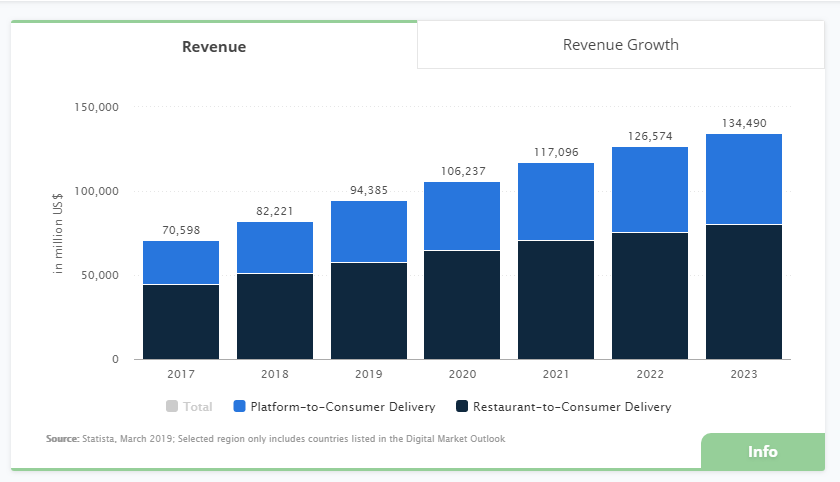

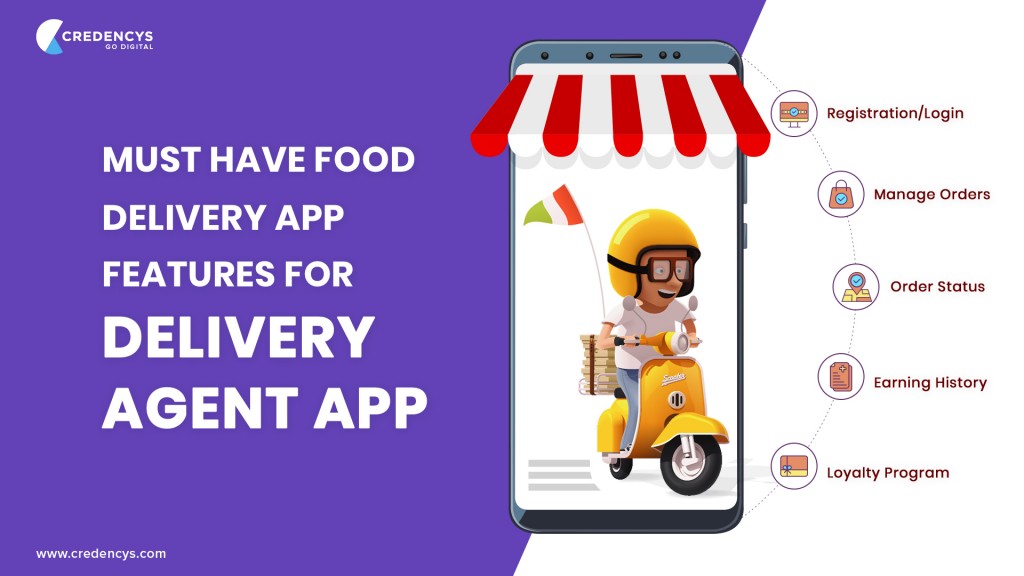
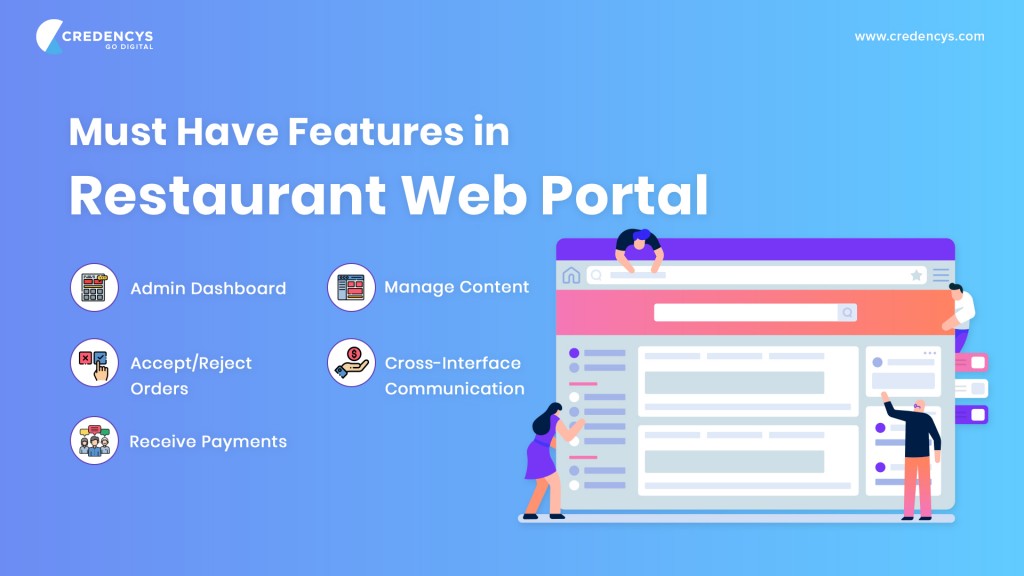



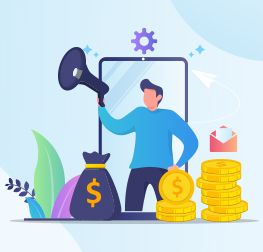
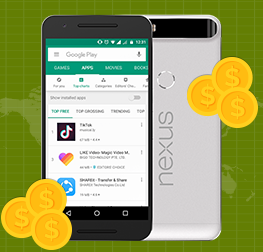



Tags: